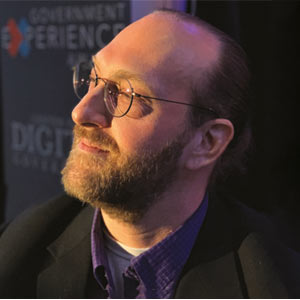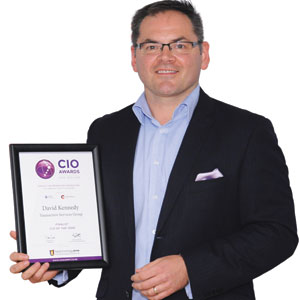THANK YOU FOR SUBSCRIBING

Navigating Public Concerns in the Age of Smart Cities
Adam Mowlam, Manager Smart Cities, City of Greater Geelong and Ben Sinnott, Smart City Lead, Wyndham City Council


Adam Mowlam, Manager Smart Cities, City of Greater Geelong
What is a smart city?
There are many working definitions of a smart city, but the most prevalent is a city based upon the foundations of good urban planning, economic competitiveness, infrastructure, and service provision that uses technology and data to enhance liveability, sustainability, and workability, supported by a broad and active collaboration amongst city stakeholders.
Smart city projects by local governments prioritise citizen needs, ranging from smart bins and barbecues for service efficiency, free public WiFi for addressing digital inclusion, living labs for community-led innovation, and smart parking to reduce traffic congestion. These projects enhance efficiency, improve access, foster innovation, and create a more sustainable and equitable community.
A defining characteristic of the smart city movement is the importance given to the evolution of a city’s industries and commercial activities. Cities need to be hubs of digital and clean technology innovation in order to provide employment and be more globally fluent to attract new businesses and new talent; this process is organically embedding the concept of smart cities.
Smart cities also seek to proactively protect citizens and businesses from the potential risks of future technologies like AI, IoT, and big data. The assessment and mitigation of technology-enabled risks and issues is a far better approach than blanket avoidance, since a future-focused city is more likely to avoid challenges and be better able to respond to them than a city that minimises technology deployment.
Cities are complex organisms, with many organisations and infrastructures providing the services needed for them to function effectively. Within this system, it can be difficult to roll out urban innovation, a process heavily reliant on an engaging vision, a well-understood path, and embedded principles such as trust and transparency. Cities are also now more resource constrained than ever before due to policy and complex regulations that are further exacerbated by high inflation and a globally challenging economic environment. The need for efficient in-service delivery will inevitably lead to technology-driven innovation to fill this gap.
Scepticism towards Smart Cities
Many cities are currently witnessing a rise in social media commentary and mendacious propaganda related to the conflation of two notions: the adverse impacts of smart city technologies and the urban planning concept of 20-minute neighbourhoods that purportedly will lead to climate lockdowns. The claims include an elaborate government plan to create an Orwellian surveillance state that restricts the freedom of people, strips individuals of privacy, takes cars away from citizens, spies on people, and introduces digital IDs in a government-endorsed prison-like setup.
The impact of misinformation and malinformation on smart cities can fuel broader public distrust, hinder technological progress, and, more importantly, distort the public's perception of their benefits. This could make it harder for smart city projects to secure funding and attract investors, especially if politicians are hesitant to support smart city initiatives if they fear backlash from constituents who are highly sceptical of technology.
 Ben Sinnott, Smart City Lead, Wyndham City Council
Ben Sinnott, Smart City Lead, Wyndham City CouncilTherefore, it is crucial to address rising concerns and educate the public on the benefits and risks of smart technologies.
Addressing Concerns with Responsible AI
The question then becomes: how do city officials grappling with complex and significant challenges such as the impacts of climate change, traffic congestion caused by urbanisation, and reducing the digital divide balance the scepticism of citizens and still take the necessary and bold steps forward towards transformational change?
Most importantly, a strong and joined-up smart city program should highlight practices that dispel technology antagonism, such as digital inclusion initiatives, digital literacy programs, co-design of digital services, and robust and transparent stakeholder communications about proposed smart city implementations.
Cities need to be hubs of digital and clean technology innovation in order to provide employment and to be more globally fluent to attract new businesses and new talent, this process is organically embedding the concept of smart cities
In this article, the deployment of responsible artificial intelligence (AI) is used as an example to demonstrate how local governments can elevate citizen participation and confidence in urban innovation. A similar structure can be applied to digital surveillance, sensors, digital twins, digital ids and payments, and many other emerging technologies.
Responsible AI is the development and deployment of artificial intelligence systems in an ethical and socially responsible manner. Embedding responsible AI in city contexts is a complex process with use cases ranging from traffic analytics to security surveillance, and below are some general steps that can help with the delivery:
1. Define the goals and values: The city must establish the goals in using AI, where AI can (and cannot) be applied and setting ethical and legal principles to guide the use.
2. Establish a governance structure: The city needs to create a governance structure to oversee the development, deployment, and use of AI. This structure should involve a diverse group of stakeholders.
3. Develop and implement policies and regulations: The city should develop and implement policies and regulations to guide the development and use of AI. This can include standards for transparency, accountability, privacy, and algorithmic fairness.
4. Foster public engagement and education: The city should engage with the public to ensure that they understand the benefits and risks of AI, and ensure that outcomes sought are accessible to and usable by the people they are intended to benefit.
5. Monitor and evaluate AI use: The city should establish mechanisms for monitoring and evaluating the use of AI to ensure that it is meeting intended objectives, being used responsibly and in accordance with established policies and regulations, and where necessary adjust the solution.
Conclusion
When adopting smart technology, it is crucial to engage and involve citizens through various communication channels, listen to their needs and ideas, and provide them with information about the smart city vision, objectives, and progress. Additionally, it's essential to make the benefits of smart city solutions visible and demonstrate how they can improve the quality of life for citizens. Finally, fostering a culture of collaboration and innovation can help create a sense of ownership and empowerment, inspiring citizens to actively engage in and support smart city initiatives.
Weekly Brief
I agree We use cookies on this website to enhance your user experience. By clicking any link on this page you are giving your consent for us to set cookies. More info
Read Also













